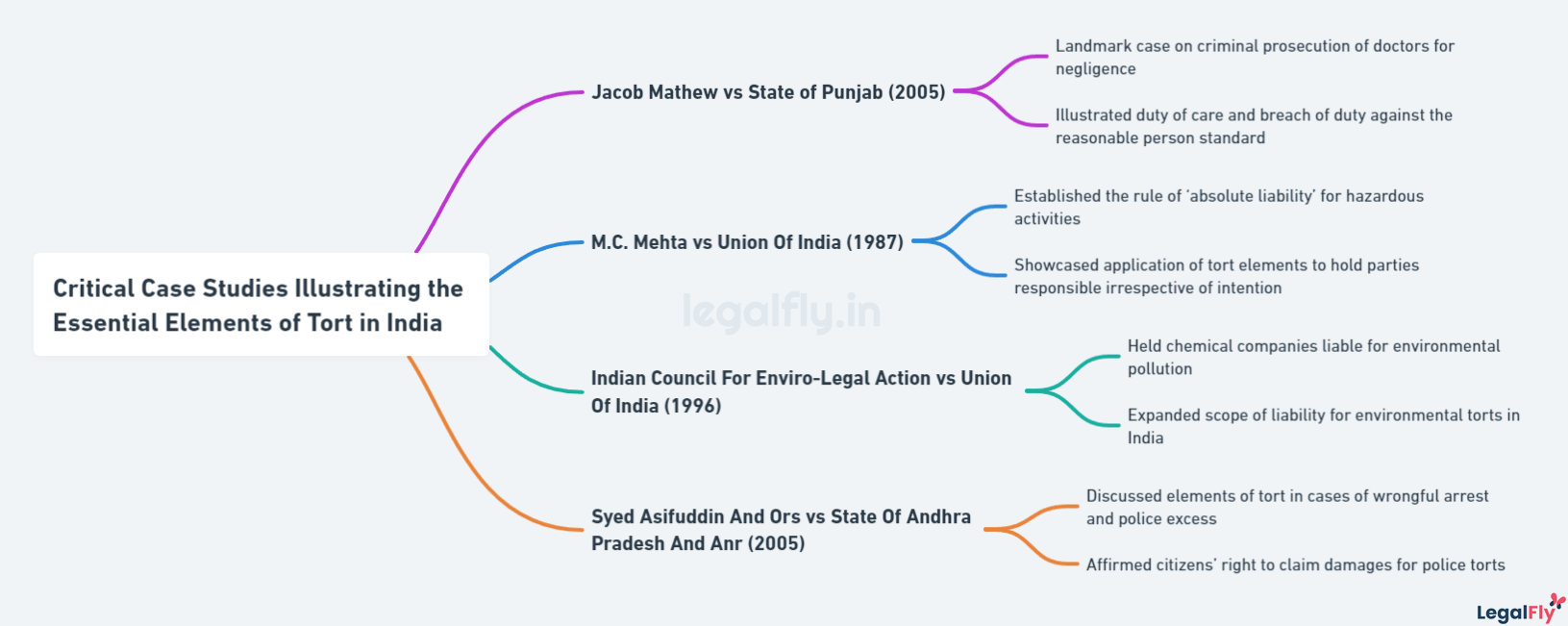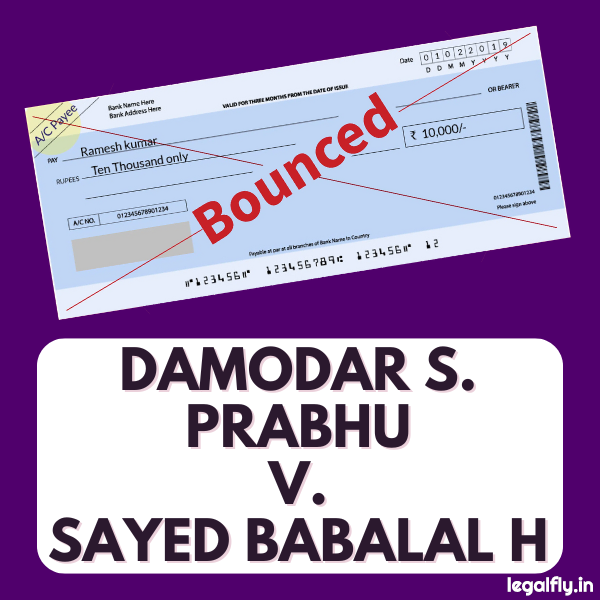Table of Contents
Meaning of Tort Law
Tort law is the body of law that deals with civil wrongs not arising from contractual obligations. The purpose of tort law is to provide relief for persons who have suffered harm from the wrongful acts of others.
Tort law allows people to obtain compensation for losses or injuries they incur from another person’s actions, inactions, or negligence that have caused them harm. The primary aims of tort law are to:
- Provide peaceful, fair, and just resolutions to disputes
- Discourage unlawful, dangerous, and harmful conduct
- Compensate victims for their losses
- Deter wrongful behavior in the future
Some fundamental principles that underpin tort law include:
- Duty of care – the legal obligation of individuals and organizations to avoid acts or omissions likely to cause foreseeable harm to others
- Breach of duty – failing to meet the duty of care standard
- Causation – a sufficiently close link between the defendant’s act and the damage suffered by the plaintiff
- Damages – monetary compensation for the losses and injuries suffered by the plaintiff
Tort law covers a wide range of topics, including negligence, intentional wrongs, product liability, defamation, and nuisance. The focus is on compensating victims through monetary damages rather than punishing wrongdoers like criminal law.
The Four Essential Elements of Tort
For a plaintiff to successfully prove a tort claim against a defendant, four essential elements must be established: duty of care, breach of duty, causation, and damages. These elements form the basis of nearly all tort cases and must be proven to assign legal liability.

Duty of Care
Duty of care refers to the legal obligation of individuals and businesses to avoid behaviors or actions that could foreseeably harm others. This foundational element establishes that the defendant owed a duty to the plaintiff when the tort occurred. Factors like relationship, foreseeability, public policy, and statutory requirements help determine if a duty was present.
Breach of Duty
Breach of duty occurs when the defendant fails to exercise the appropriate level of care, falling below the standard expected of a reasonably prudent person in a similar situation. The plaintiff must show that the defendant’s conduct was negligent or intentional, violating the existing duty of care. Examples include medical malpractice, failing to warn of known dangers, or intentionally causing harm.
Causation
Causation requires proving that the defendant’s breach of duty directly caused the plaintiff’s injury or damages. This element examines if the harm would have occurred “but for” the defendant’s actions, establishing a causal link between the breach and injury suffered. Both legal and factual causation must be demonstrated.
Damages
The final element requires showing that the plaintiff experienced quantifiable injury or loss resulting from the defendant’s breach of duty. Damages can include property damage, medical expenses, lost income, pain and suffering, loss of companionship, and other calculable harms. Plaintiffs must prove damages were a foreseeable and direct consequence of the defendant’s tortious conduct.
Types of Torts and Their Essential Elements
There are three main categories of torts:
- Intentional torts,
- Negligence torts, and
- Strict liability torts
Each category has different requirements for establishing liability.
Intentional Torts: Deliberate Acts of Wrongdoing
Intentional torts occur when a person deliberately causes harm or offense. To establish liability, it must be shown that the defendant’s actions were purposeful, with an understanding that their actions were likely to cause harm. Key examples include:
- Battery: Direct physical contact with someone without consent, causing harm or offense.
- Assault: The act of making someone reasonably fear an imminent battery.
- False Imprisonment: Illegally restricting someone’s freedom to move.
- Trespass: Entering someone’s property without permission or lawful right.
- Defamation: Publicly making false statements that harm someone’s reputation.
For intentional torts, proving the defendant’s intent to harm or cause apprehension is crucial, whether through direct actions or through circumstances that made harm substantially certain.
Negligence: Carelessness Causing Harm
Negligence involves harm caused by a failure to act as a reasonably prudent person would under similar circumstances. It requires proof of:
- A duty of care owed by the defendant to the plaintiff.
- Breach of that duty through action or inaction.
- Direct causation from the breach to the harm suffered.
- Actual damages resulting from the breach.
Negligence is common in personal injury cases, medical malpractice, and car accidents.
Strict Liability: Liability Without Fault
Strict liability holds a party responsible for damage or harm caused by their actions, regardless of fault or intent. Key areas include:
- Product liability, where manufacturers are held accountable for defective products.
- Ownership of wild animals.
- Abnormally dangerous activities.
In strict liability cases, proving negligence or intent is not required; the focus is on the act itself and the resulting harm.
Duty of Care Explained
Duty of care is the first element that must be established in a negligence claim. It refers to the legal obligation imposed on individuals and organizations requiring them to adhere to a standard of reasonable care while performing acts that could foreseeably harm others.
Establishing a Duty of Care
To establish a duty of care, the plaintiff must prove that the defendant owed them a duty to act reasonably under the circumstances. Certain relationships, such as doctor-patient or teacher-student, automatically create a duty of care. Beyond special relationships, a duty may exist when a reasonable person could foresee potential injury due to their conduct. If no duty exists between the plaintiff and defendant, the negligence claim cannot proceed.
The Reasonable Person Standard
The duty of care requires individuals to act as a “reasonable person” under similar circumstances. This theoretically reasonable person is prudent and exercises average attention, knowledge, intelligence, and judgment. Failing to act as a reasonable person would breach the duty of care. Factors like special skills or training may also raise the standard of care expected of the defendant.
Breach of Duty and Its Implications
A breach of duty occurs when a person or entity fails to conform to the required standard of conduct, which is the duty of care owed to others in the given circumstances. To establish a breach of duty in a negligence case, the plaintiff must show that the defendant had a duty of care and failed to live up to that duty.
Identifying a Breach of Duty
Determining whether a breach of duty has occurred involves assessing if the defendant’s actions meet the standard of care that would be expected from a reasonably prudent person in the same situation. The plaintiff must prove that the defendant’s conduct fell below this reasonable standard. If no duty exists between the parties, there can be no breach.
Examples of Breach of Duty in Tort Cases
Some examples of breaches of duty in negligence tort cases include:
- A doctor fails to provide an accurate diagnosis or appropriate treatment based on symptoms and medical history.
- A driver operating a vehicle while intoxicated or distracted causes an accident.
- A property owner fails to maintain safe premises and address known hazards, leading to injury.
- A manufacturer produces a defective product that causes harm to consumers under regular use.
- An employer not providing proper safety equipment or training to employees for their work.
The plaintiff must show that the defendant’s substandard conduct was an actual and proximate cause of the plaintiff’s injuries or damages. If no breach of duty can be established, there is no basis for liability in negligence.
Causation in Tort Law
Causation is a critical element in establishing liability in tort law. It involves proving that the defendant’s conduct caused the plaintiff’s injury. There are two main components of causation – factual causation and proximate causation.
The “But For” Test for Factual Causation
Factual causation, also known as causation in fact, must be established to prove that the defendant’s actions led to the plaintiff’s harm. This is determined using the “but for” test, which assesses if the plaintiff’s injury would not have occurred but for the defendant’s conduct.
The but for test analyzes whether the plaintiff’s injury would still have occurred even if the defendant had acted reasonably and not breached their duty of care. If the answer is no and the injury would not have happened, then factual causation is established.
For example, in a car accident lawsuit, the plaintiff must prove that, but for the defendant’s negligent driving, the collision and subsequent injuries would not have occurred. Meeting the but for test demonstrates that the defendant’s actions were the cause, in fact, of the plaintiff’s harm.
Proximate Causation and Legal Responsibility
In addition to factual causation, proximate causation must also be proven. Also known as legal causation, proximate cause establishes the scope of the defendant’s legal liability even if their actions factually caused the plaintiff’s injury.
The critical question in the proximate cause is whether the harm occurred was a foreseeable consequence of the defendant’s negligence. Even if factual causation is shown, the plaintiff must prove the injury sustained was not too remote or unforeseeable based on the defendant’s actions.
Proximate cause limits the chain of factual causation to only those harms that could reasonably occur due to the defendant’s breach of duty. This serves the purpose of fairness in tort law and prevents holding defendants liable for highly unusual or unexpected losses.
Damages
Damages are monetary compensation awarded in a lawsuit to reimburse the plaintiff for their losses and harms suffered due to the defendant’s actions. Calculating damages in tort cases involves assessing both economic and non-economic losses.
Types of Damages
Several types of damages may be awarded in a tort case:
- Compensatory damages reimburse the plaintiff for actual losses and out-of-pocket costs resulting from the defendant’s actions. These include medical expenses, lost income and wages, property damage, and other financial losses.
- Non-economic damages cover harms that are not financial, such as pain and suffering, loss of companionship, emotional distress, loss of consortium, and damage to reputation. These are more subjective and difficult to quantify.
- Punitive damages are awarded not to compensate the plaintiff but to punish the defendant for egregious misconduct. Courts award punitive damages in situations where the defendant acted intentionally, maliciously, or recklessly.
- Nominal damages are small sums awarded when the plaintiff’s legal rights were violated, but there were minimal actual damages.
Calculating Damages
To calculate compensatory damages, plaintiffs must prove and document their financial losses through medical records, pay stubs, repair estimates, etc. Expert witnesses like doctors and economists are often used to provide evidence on the scope of the losses.
Non-economic damages do not have precise values and are left to the jury’s discretion, guided by the evidence presented at trial. Many states cap non-economic damages to limit excessive verdicts. Punitive damages are also discretionary but typically capped at a multiple of the compensatory damages.
Overall, damages in tort law aim to make the plaintiff whole again by compensating for both tangible and intangible harms inflicted by the defendant’s tortious actions. The plaintiff bears the burden of proving damages with reasonable certainty.
Critical Case Studies Illustrating the Essential Elements of Tort in India
The application of the essential elements of tort law can be seen in various landmark judgments by Indian courts. These cases demonstrate how the elements of duty, breach, causation, and damages determine liability and shape case outcomes.

Jacob Mathew vs State of Punjab [(2005) 6 SCC 1]
This landmark case before the Supreme Court established guidelines on criminal prosecution of doctors for negligence. The Court discussed principles of negligence and the doctor’s duty of care towards patients. This case illustrated the need to assess the doctor’s actions against the reasonable person standard when establishing a breach of duty.
M.C. Mehta vs Union Of India [(1987) 1 SCC 395]
This public interest litigation case before the Supreme Court established the rule of ‘absolute liability’ for accidents caused by hazardous activities. The UCC chemical leak disaster led the Court to apply strict liability and hold UCC absolutely liable as its actions had caused harm. This showcased the application of essential tort elements to hold parties responsible irrespective of intention or negligence.
Indian Council For Enviro-Legal Action vs Union Of India [(1996) 3 SCC 212]
This case saw the Supreme Court hold several chemical companies liable for polluting the environment. By applying tort law principles, the Court found a duty of care, breach through negligent handling of hazardous waste, and causation as the actions caused environmental damage and considerable harm. This expanded the scope of liability for environmental torts in India.
Syed Asifuddin And Ors vs State Of Andhra Pradesh And Anr [(2005) 9 SCC 364]
Here, the Supreme Court discussed how the elements of tort apply in cases of wrongful arrest and police excess. The Court found the police had a duty of care towards citizens, which was breached by wrongful arrest and negligence. This breach caused a loss of liberty and reputation. The judgment affirmed citizens’ right to claim damages for police torts.
These cases demonstrate how the essential pillars of tort law are central to determining accountability and awarding just remedies in Indian legal cases across diverse sectors. Understanding duty, breach, causation, and damages provides the framework to ascertain when an action is tortious in nature.
Conclusion: The Importance of Understanding Tort Law’s Essential Elements
Tort law plays a vital role in society by providing compensation for harm caused by others while also deterring injurious actions. Understanding the essential elements of tort is crucial, as these elements shape legal outcomes and determine if an injured party receives redress.
As discussed, the four key elements of tort are duty of care, breach of duty, causation, and damages. Each element must be established for a tort claim to succeed. The interplay between these elements allows courts to enforce legal rights and obligations nuancedly based on a case’s specific circumstances.
For instance, the extent of the defendant’s duty of care is calibrated to what a “reasonable person” would have done in a similar situation. The plaintiff must then show this duty was breached in a way that caused compensable injury. The essential elements thus create a structure for objectively assessing blameworthiness and awarding proportional damages.
Understanding tort law theory is crucial for legal practitioners. It allows them to construct arguments demonstrating each element is fulfilled to build a robust tort claim. For individuals, knowledge of the essential elements helps protect legal rights and obtain due remedies. Overall, the foundational principles of tort law empower citizens to hold wrongdoers accountable and access justice.




